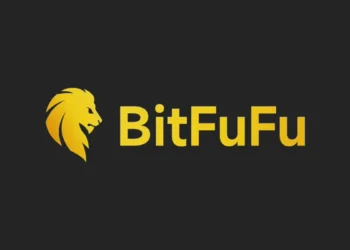Two major developments this week signal growing institutional and Web3 interest in U.S. prediction markets. CME Group and FanDuel announced plans to launch a regulated prediction platform, while Polymarket began testing a compliant US exchange ahead of its relaunch.
CME and FanDuel to Launch Regulated Prediction App
CME Group, the world’s largest derivatives marketplace, and FanDuel, the U.S. sports betting platform owned by Flutter Entertainment, unveiled a new mobile application called FanDuel Predicts.
Sponsored
The app is set to debut in December 2025, pending regulatory clearance, and will offer event-based contracts tied to sports outcomes, economic indicators, and financial benchmarks.
The companies said the platform will operate in select U.S. states and use CME’s regulated market infrastructure. The new product aims to merge FanDuel’s consumer reach with CME’s derivatives expertise, creating a legally compliant environment for small-scale event trading.
FanDuel Predicts will include standard compliance features such as identity verification and exposure controls. CME stated that all contracts will be structured as “yes/no” event-based instruments settled through its regulated clearing mechanisms.
Polymarket Tests U.S. Exchange Relaunch
At the same time, blockchain-based prediction market Polymarket has begun beta testing its new US exchange.
The move follows the company’s acquisition of QCEX, a registered US derivatives exchange and clearinghouse, and a no-action letter granted by the Commodity Futures Trading Commission (CFTC) that permits limited operations.
The company plans to reopen full access later in November 2025 and is reportedly in discussions with major investors for additional funding.
Regulatory Landscape
Prediction markets in the U.S. are seeing rapid growth, driven by heightened interest following the 2024 election and a gradual easing of regulatory constraints. Trading volumes surged across platforms in October, hitting record levels.
Two major competitors, Kalshi and Polymarket, accounted for a combined $7.4 billion in trading, marking their strongest month to date.
Kalshi led with roughly $4.4 billion, while Polymarket followed at $3 billion. Sports-related contracts drove the bulk of activity, outperforming political and economic contracts in both participation and liquidity.
Why This Matters
The developments show U.S. prediction markets moving from a niche space into a regulated, high-volume sector where both traditional finance and blockchain platforms can compete and scale.
Delve into DailyCoin’s trending crypto news today:
6.4 Trillion LUNC “Burned”: Legit Luna Classic Burn Or Hoax?
Canary CEO: “XRP Will Double Solana” In Amped ETF Race
People Also Ask:
A prediction market is a platform where participants trade contracts based on the outcome of future events, such as elections, sports, or financial indicators. Prices reflect collective probability estimates.
Users buy “yes/no” or outcome-based contracts. If the event happens, the contract pays out; if not, it expires worthless. Prices often indicate the market’s probability of an event occurring.
Yes, but mostly under regulated frameworks. Platforms must comply with CFTC rules or state regulations. Blockchain-based platforms operate under evolving guidance and may require special approvals.
Traditional markets (like Kalshi) use fiat and regulated infrastructure, while crypto-based markets (like Polymarket) use blockchain, offering decentralized trading and on-chain settlement.
Prediction markets can be volatile. Contract value depends entirely on event outcomes, and platforms may carry regulatory or technical risks, especially for crypto-based markets.




